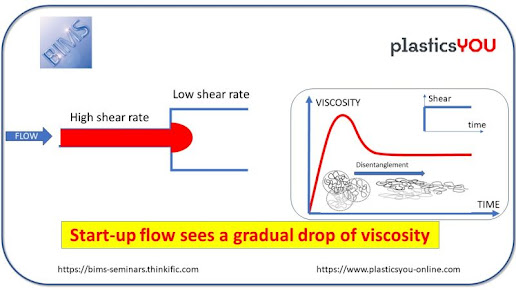Polyurethane composite used in timber trailer
As part of its Transformative Technology programme – which aims to transform Canada’s forest operations industry – forest research insitute FPInnovations wanted to conserve fuel and reduce the weight of traditional timber trailers.
FPInnovations identified the potential to reduce the weight of traditional timber trailers by replacing steel stakes (the part that holds the timber inside the trailer) and bunks (the transversal part of the trailer’s main frame that joins the stakes) with a composite material. It contacted Serge Pagé of Mat-Comp, Canada, an expert in composite structural analysis, to help design the parts.
"Originally, a filament winding process with glass fibre and epoxy resin was chosen, but the product couldn’t be produced within the target cost using that process," explains Pagé. "The focus then shifted to pultrusion, since its continuous process makes it a more cost-efficient option."
Baydur PUL 2500 resin is a two-component, liquid polyurethane system specifically designed for pultrusion applications.
To pultrude the trailer components, the group turned to Canadian pultrusion specialist Pultrall Inc.
Two pultruded profiles were created: one for the stake and one for the bunk. The stakes are 4 x 4.5 inches, while the bunks are 4 x 8 inches. They are assembled together with steel adaptors to form a set (two stakes and one bunk). For example, a log trailer could have up to 20 stakes and 10 bunks. The overall dimensions are 102 inches (width) by approximately 120 inches (height).
Both the stakes and bunks are pultruded using more than 70% unidirectional and triaxial glass fibre in the Baydur PUL 2500 resin system. A dark grey colour was chosen to minimise the ultraviolet (UV) degradation of the parts. Overall weight for a set (two stakes and one bunk with steel adaptors) is approximately 200 lbs, a reduction of 40% compared with the steel equivalent.
“By reducing the weight of the timber trailer, more material can be carried," reports Frederic Boutin, a researcher at FPInnovations. "A lighter timber trailer also requires less fuel to run, reducing operations costs."
The new design saves approximately one half ton of weight on the trailer.
The new timber trailer also has better impact resistance than an equivalent steel product. Where a steel picket deforms permanently, the composite equivalent retains its shape very well. If the composite parts crack when being abused, they can still safely hold the load.
Extensive testing, both static and dynamic, was performed on the new design in order to assure its safety.
Deloupe, a Canadian manufacturer of road transport equipment, has made a prototype of the trailer, which hit the road in January It will be in operation for six months and will then be evaluated for potential commercial production.
FPInnovations identified the potential to reduce the weight of traditional timber trailers by replacing steel stakes (the part that holds the timber inside the trailer) and bunks (the transversal part of the trailer’s main frame that joins the stakes) with a composite material. It contacted Serge Pagé of Mat-Comp, Canada, an expert in composite structural analysis, to help design the parts.
"Originally, a filament winding process with glass fibre and epoxy resin was chosen, but the product couldn’t be produced within the target cost using that process," explains Pagé. "The focus then shifted to pultrusion, since its continuous process makes it a more cost-efficient option."
Putrusion process
The decision to use pultrusion led to Bayer MaterialScience LLC joining the project and the choice of its Baydur® PUL 2500 polyurethane pultrusion resin for the parts.Baydur PUL 2500 resin is a two-component, liquid polyurethane system specifically designed for pultrusion applications.
To pultrude the trailer components, the group turned to Canadian pultrusion specialist Pultrall Inc.
Two pultruded profiles were created: one for the stake and one for the bunk. The stakes are 4 x 4.5 inches, while the bunks are 4 x 8 inches. They are assembled together with steel adaptors to form a set (two stakes and one bunk). For example, a log trailer could have up to 20 stakes and 10 bunks. The overall dimensions are 102 inches (width) by approximately 120 inches (height).
Both the stakes and bunks are pultruded using more than 70% unidirectional and triaxial glass fibre in the Baydur PUL 2500 resin system. A dark grey colour was chosen to minimise the ultraviolet (UV) degradation of the parts. Overall weight for a set (two stakes and one bunk with steel adaptors) is approximately 200 lbs, a reduction of 40% compared with the steel equivalent.
Benefits of composite over steel
The use of pultruded polyurethane composites makes it possible to dramatically reduce trailer weight.“By reducing the weight of the timber trailer, more material can be carried," reports Frederic Boutin, a researcher at FPInnovations. "A lighter timber trailer also requires less fuel to run, reducing operations costs."
The new design saves approximately one half ton of weight on the trailer.
The new timber trailer also has better impact resistance than an equivalent steel product. Where a steel picket deforms permanently, the composite equivalent retains its shape very well. If the composite parts crack when being abused, they can still safely hold the load.
Extensive testing, both static and dynamic, was performed on the new design in order to assure its safety.
Trailer prototype
The project is now in its final phase.Deloupe, a Canadian manufacturer of road transport equipment, has made a prototype of the trailer, which hit the road in January It will be in operation for six months and will then be evaluated for potential commercial production.


Comments
Post a Comment